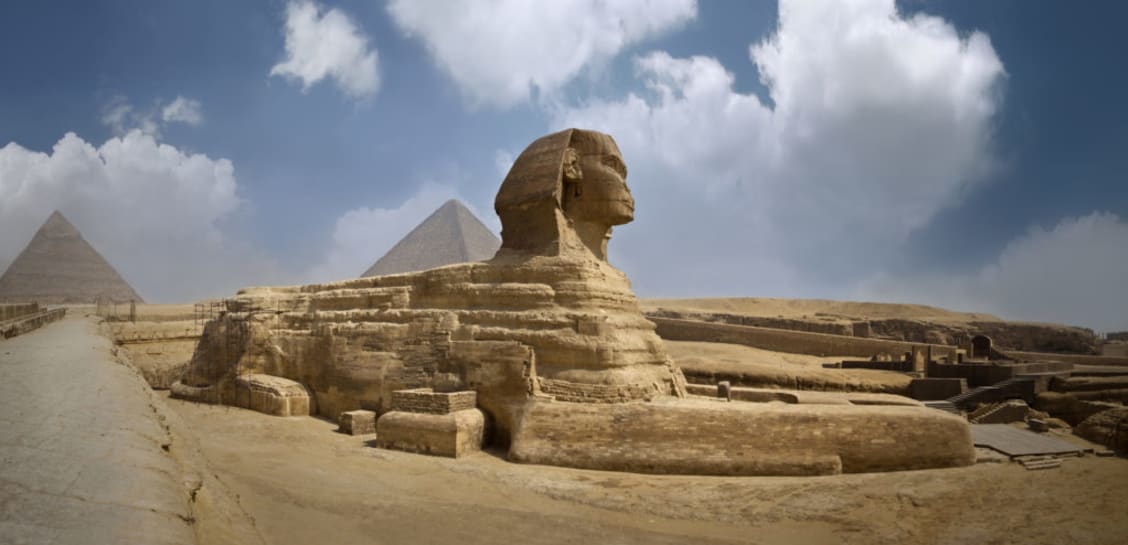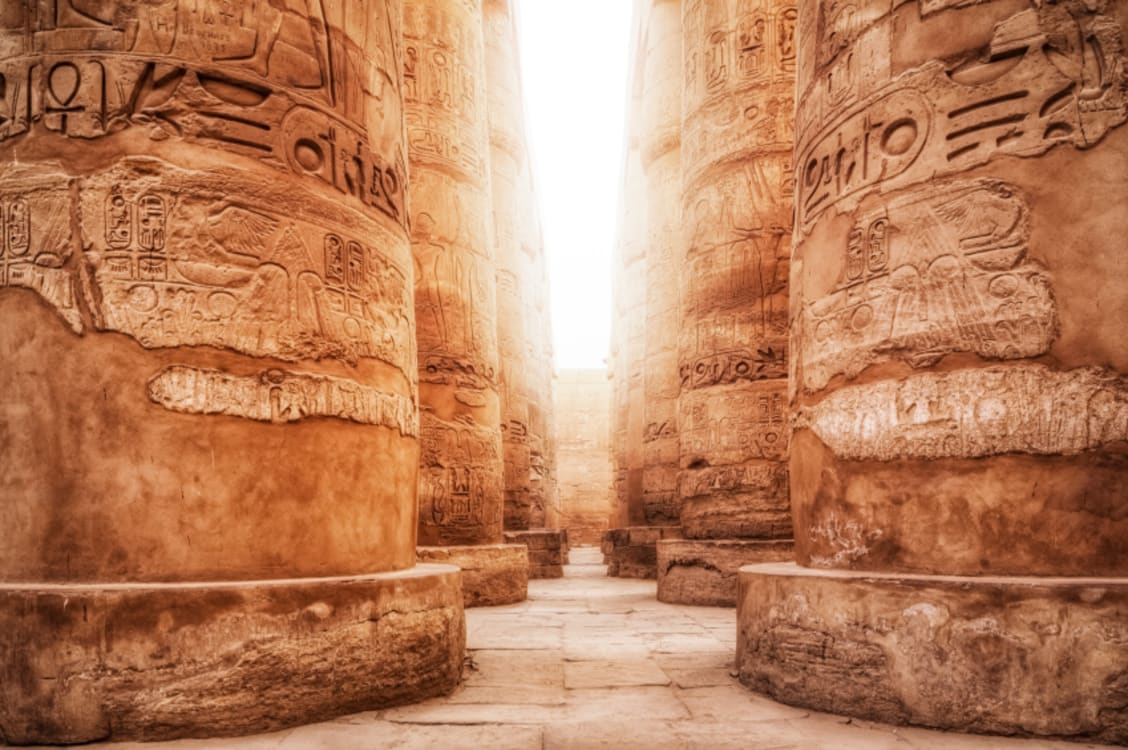
Egypt is one of the most historically and culturally rich countries in the world. Though part of Africa, this country is linked to Asia and the Middle East via the Sinai Peninsula – which has been a pivotal piece of land for thousands of years. If you enjoy ancient ruins and archaeology, then Egypt is your paradise. Incredible attractions can be found throughout the country, often near the life-giving Nile River. It is this river where you will also encounter some incredible natural beauty as well – it is where lush greens grow out to their desert barriers, and where large Nile Crocodiles soak up the sun while they wait for their next meal. If you have a sense of adventure and a taste for culture, history, great food and hot weather, then Egypt is the perfect destination for you.

The only apt unit of time to describe the history of Egypt is “millennia.” For nearly 3,000 years, the African country stood astride the Mediterranean world, the dominant political and cultural driver in the entire region. To put that in some perspective, think of how different the world was just in the year 2000, and how different that world was from a century before. The fact that Egypt managed such influence for such a long period is a testament to the vibrancy of the culture.
And because that culture included a commitment to documentation and preservation, observers today can get a glimpse into the world that once was. In fact, Egypt itself so drives conversations of antiquity that it has its own dedicated field of study, appropriately-named Egyptology.
However, you don’t need a degree or a textbook to take in Egypt’s history. On Egypt tours, visitors to the nation can see the very structures that have so captivated the world’s imagination for thousands upon thousands of years. Here are some of the most historic:

Great Sphinx
The largest monolithic statue in the world, the Great Sphinx, is over 60 feet high and nearly 250 feet long. Hewn from limestone, it’s a display of the couchant sphinx, a mythical creature that combines the body of a lion with the face of a human being.
Considered a marvel even by today’s standards of engineering, the wonder is only compounded by the fact that it is roughly 4,500 years old! It was constructed around 2,600 BCE for Pharaoh Khafre Pharaoh of Egypt’s fourth dynasty. While there is some dispute about the actual age of the marvel, common wisdom holds that the face itself is modeled after the ruler’s, making it a fascinating look into a once-powerful leader.
The monument stands on the Nile’s west bank, on the Giza plateau, a sandy desert with relatively little flora or fauna.
Valley of the Kings Some of the structures in Egypt, like the Sphinx, tower over the skyline and are visible for miles around. Others, however, stretch deep into the earth, once-secret testaments to a many-layered society.
The Valley of the Kings can be found beneath the Earth’s surface, holding a collection of elaborate tombs near Luxor. From 1,539-1,075 BCE, Egypt’s New Kingdom, this area served as a mausoleum for the most powerful members of society, such as priests, queens and even Pharaoh Ramses II.
In the tradition of the time, these tombs boasted everything the interred would need for the world beyond, from mundane items such as clothes and beer, to dazzling golden masks and priceless jewels. It is a glimpse into both the terrestrial and the sublime, and continues to yield surprises even after centuries of interest.
While there are no photos allowed, the brilliance of the images alone will make this trip part of your own personal history.

Luxor Temple After visiting the Valley of the Kings, it is but a short ride to Luxor, which features a large temple complex constructed around the same time, in 1,400 BCE. Built from sandstone, several major temples dot the area, including the Temple of Seti I at Gurnah, the Temple of Hatshepsut at Deir el Bahri, the Temple of Ramses II and the Temple of Ramses III at Medinet Habu
The architecture makes clever use of illusionism, whereby the size of some structures is enhanced by the relative position and design. It creates an atmosphere of regality, befitting of the fact that it is where many of the Pharaohs were crowned. Even Alexander the Great, who may not have made it so far south, claimed a spiritual kinship with the temples, noting it as the place where he became ruler.
Visitors today can explore the structures, which bear the history not only of their creators, but also the many generations that followed and added their own imprints.

Great Pyramid of Giza
The Great Pyramid of Giza bears some of the loftiest distinctions of any structure, anywhere. Not only is it the oldest of the Seven Wonders of the Ancient World (along with the Hanging Gardens of Babylon, Temple of Artemis, Statue of Zeus at Olympia, Mausoleum at Halicarnassus, Colossus of Rhodes, and the Lighthouse of Alexandria), it is the only one to remain largely intact. Like that of the Sphinx, its endurance is a testament to an architectural sophistication that was far ahead of its time.
For more than 38 centuries, it was the tallest man-made structure in the world, at 481 feet high. The sheer scale of it has lent some mystery to its construction, with most prevailing views agreeing that it was built by moving giant stones from a nearby quarry and lifting them into place.
Historians believe the construction took anywhere from 10 to 20 years, making it one of the most ambitious building projects the ancient world had ever seen. Tourists today marvel at the craftsmanship shown, and at just how long the structure has endured. One study estimated that, at the peak of building, 40,000 people were involved, making it no wonder that so many visitors flock to see their creation.
Want some adventure with your history? Continue your journey with an African safari.
Thank you to our friends at Kensington Tours for this information.

